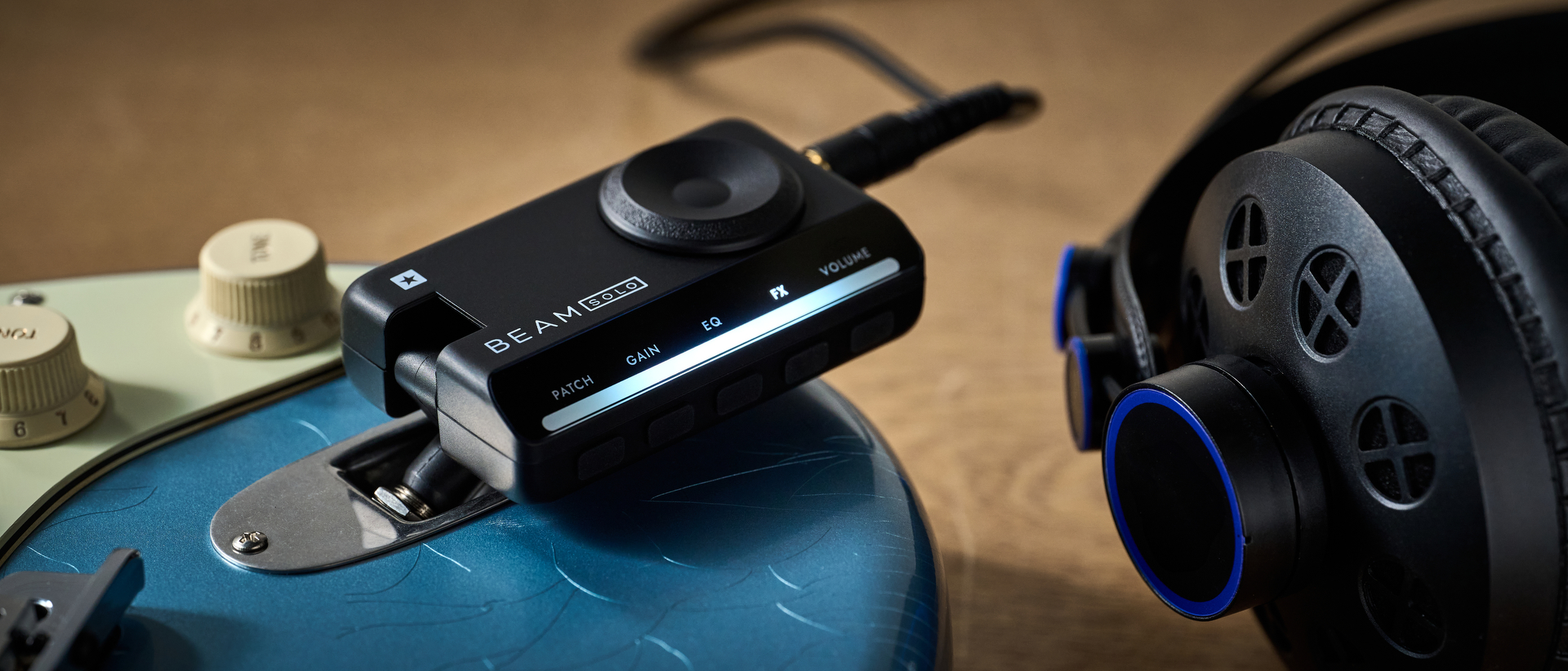Review: Marshall Amplification JVM410HJS Joe Satriani Head

As wacky as this may sound, I find that amps are a lot like meat. Stay with me now. Some amps are reliable, easy to work with, not too heavy, and fine to enjoy every day, like chicken. Other amps are wild and exotic but still familiar, like bison, venison, or duck.
Then there are amps that are smoky, spicy, and dripping with fat—the electronic equivalent of a barbecued rack of pork ribs. See where I’m going with this?
Well, just as beef is the king of the critters when it comes to delectable delights, Marshall is the reigning amp for rockers who want something big, bold, muscular, and satisfying. Now I hope I don’t offend Joe Satriani’s vegetarian sensibilities by saying this, but his new Marshall JVM410HJS Joe Satriani amp head is like a butcher’s sampler pack of prime cuts of beef, delivering everything from the juicy, daily grind of its plexi tones to mouthwatering thick and rich overdrive textures that overwhelm the senses like a Kobe rib-eye steak.
While other varieties of amps may provide pleasant distractions from time to time, at the end of the day the Marshall sound is the meat of the matter when you gotta rock, and the Marshall JVM410HJS delivers more ways to rock in style than ever before.
Features
With its four-channel design and 28 knobs arranged in six distinct sections, the JVM410HJS looks almost identical to its predecessor, the JVM410H. Closer examination reveals several key differences, such as the replacement of the reverb section with noise gate controls for each channel and the addition of a Mid Shift button placed between the OD1 and OD2 channel controls. Marshall made numerous changes to the internal circuitry as well, working closely with Satriani to dial in the tonal character and dynamic response to his preferences.
Each of the JVM410HJS’s four channels (Clean, Crunch, OD1 and OD2) has its own volume, gain, bass, middle and treble controls as well as its own mode switch that is used for selecting a channel and for scrolling through each channel’s own Green, Orange and Red modes, which provide different tone profiles.
The Gate section provides separate threshold controls for each channel plus an enable switch that turns the gate on or off for the currently selected channel. The master section includes separate master 1 and master 2 controls, which are individually assignable to each mode; a master 2 switch for manually switching between master 1 and 2; and resonance and presence controls. Other key features include a programmable foot controller with six switches that connects to the amp via a standard mono 1/4-inch cable, a programmable serial effect loop, a power amp insert, an emulated line output, and MIDI in and thru jacks.
All the latest guitar news, interviews, lessons, reviews, deals and more, direct to your inbox!
Performance
The JVM410HJS is everything you’d expect a 100-watt Marshall driven by four EL34 and five ECC83 tubes to be, and more. The range of tones that this amp produces is astounding. Whether you want sparkling clean tones, the classic crisp crunch of a plexi, highly saturated and harmonically complex distortion, or any texture in between, this amp does it all, and it makes it very easy for guitarists to instantly access a wide variety of those sounds onstage.
The replacement of the reverb section (which I honestly find useless on most high-gain 100-watt amp heads) with separate noise gates is a stroke of genius, enabling the JVM410HJS to produce studio-quiet tones right out of the box. If you want Joe’s ripping solo sounds, they’re there, with incredible dynamic response and the ability to go from a whisper to a roar with the flick of your guitar’s volume knob. But the amp offers much more for players who want to create their own awesome sonic signatures.
Cheat Sheet
List Price $3,600
Manufacturer Marshall Amplification, marshallamps.com
Each of the four channels has a mode switch that provides a selection of Green, Orange, and Red modes for customizing sound in great detail. Separate noise gates and threshold controls for each channel keep the tone tight, dynamic and studio-quiet.
The Bottom Line
The JVM410HJS is an outrageously versatile amp that significantly improves upon the sound and design of Marshall’s previous JVM410H, thanks to input and insight from Joe Satriani.
Chris is the co-author of Eruption - Conversations with Eddie Van Halen. He is a 40-year music industry veteran who started at Boardwalk Entertainment (Joan Jett, Night Ranger) and Roland US before becoming a guitar journalist in 1991. He has interviewed more than 600 artists, written more than 1,400 product reviews and contributed to Jeff Beck’s Beck 01: Hot Rods and Rock & Roll and Eric Clapton’s Six String Stories.

